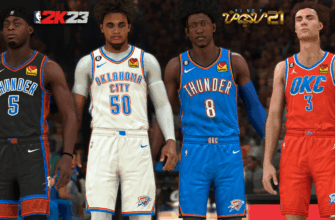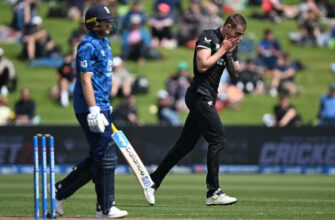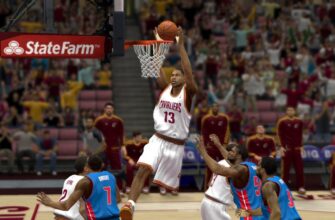In the gladiatorial arena of fantasy basketball, victory isn`t merely found by picking star players; it`s forged in the quiet intensity of preparation and the strategic brilliance of a well-executed draft. Forget gut feelings and last-minute hunches – the true champions walk into draft night with a plan, a contingency, and an uncanny ability to spot value where others see only names.
- The Blueprint Before the Battle: Your Pre-Draft Reconnaissance
- Crafting Your Foundation: Anchors and High-Ceiling Gambles (Rounds 1-3)
- Navigating the Mid-Game: Value, Versatility, and the Sophomore Surge (Rounds 4-8)
- The Home Stretch: Sleepers, Stashes, and the Art of the Late-Round Heist (Rounds 9+)
- The Unseen Opponent: Adaptation and Flexibility
The Blueprint Before the Battle: Your Pre-Draft Reconnaissance
Before you even consider which player`s digital avatar will grace your roster, a proper scouting report is in order. This isn`t just about reading rankings; it`s about understanding the terrain you`ll be fighting on.
- Know Your League, Know Thyself: Is it a points league where every assist and rebound translates directly to a score, or a category league demanding a delicate balance of statistical excellence? Roster sizes, waiver wire rules, and even playoff schedules can drastically alter player values. A player who is a fringe pick in one format might be a cornerstone in another.
- The Unsung Heroes: Mock Drafts. Consider them your tactical rehearsals. These aren`t just for fun; they`re vital for understanding market trends. Will your sleeper be snatched two rounds earlier than expected? Is that mid-round target consistently falling to you? Mock drafts, plural, are your crystal ball, offering a glimpse into the collective psyche of your competition.
- Decoding ADP: Average Draft Position. This isn`t a commandment etched in stone, but rather a compass. It shows you where the consensus places a player. Astute general managers use ADP not to blindly follow, but to identify value. If a player projected for top-20 production is consistently falling to the late second or early third round, that`s an opportunity, not a mistake. Likewise, if someone is vastly overrated by the ADP, you know to let them pass.
Crafting Your Foundation: Anchors and High-Ceiling Gambles (Rounds 1-3)
The early rounds are where you lay the bedrock of your fantasy empire. This is no place for experiments, but rather for calculated decisions that will carry your team through the grueling season.
- The Untouchables: Players like a Nikola Jokic or a Victor Wembanyama represent the pinnacle of fantasy production. In points leagues, Jokic`s all-around dominance is legendary. In category leagues, Wembanyama`s unprecedented block and steal rates, combined with scoring and rebounding, can single-handedly anchor multiple categories. Knowing which format favors which superstar is your first major strategic advantage.
- The High-Wire Walkers: Then there are players with immense per-game upside, often offset by an injury history or a new, unproven role. Think of a perennial statistical monster like Anthony Davis, who, when healthy, can challenge for top-tier fantasy production across the board. Or a burgeoning star like a healthy Cade Cunningham, whose fourth season promises further growth into a triple-double threat. These are calculated risks, but their ceiling can be league-winning.
- Balancing the Books: In category leagues, avoid over-committing to a single stat in the first few rounds. A balanced approach allows for more flexibility later. In points leagues, simply chase the highest projected totals, but always be mindful of consistency.
Navigating the Mid-Game: Value, Versatility, and the Sophomore Surge (Rounds 4-8)
The middle rounds are where leagues are often won or lost. This is where you find the players who quietly excel, provide invaluable versatility, or are poised for a significant leap.
- The Underrated Workhorses: These are the players who consistently fill the stat sheet without necessarily being household names. A Josh Hart, with his fantasy-friendly all-around game, or a Derrick White, contributing across points, threes, steals, and even blocks for a guard, are perfect examples. They might not grab headlines, but they`ll be quietly boosting your team`s weekly totals.
- The Next Step: Look for players entering their second or third year with increased opportunity or a proven track record of improvement. A Jalen Green, transitioning to a more efficient secondary role, or an Amen Thompson, set to expand his responsibilities, are prime candidates. Similarly, a Deni Avdija, given the keys to an offense, can outproduce his ADP dramatically. Their growth often outpaces their draft position.
- The Specialist: Don`t overlook big men who may not be elite scorers but offer invaluable contributions in specific categories. A Walker Kessler, for instance, provides elite blocks and rebounds, which can be a game-changer in category leagues. These players complement your early-round scorers perfectly.
The Home Stretch: Sleepers, Stashes, and the Art of the Late-Round Heist (Rounds 9+)
This is where true fantasy savants distinguish themselves. While others are drafting backups with limited upside, you`re unearthing hidden gems that can swing your season.
- The Resurgent Veteran: Sometimes, a change of scenery or an expanded role can re-ignite a veteran`s fantasy value. A Kevin Porter Jr. in a new system, playing off a superstar, could recapture past production levels, far exceeding his late ADP.
- The Rookie Revelation: Rookies are always a gamble, but some offer immediate high upside, especially when thrust into significant roles due to team composition or injury. Think of a Cooper Flagg stepping into a vacant offensive role, or an Alex Sarr bringing elite defensive stats from day one. A Reed Sheppard, if given starting minutes, could be a top-75 player hiding in the triple-digits of ADP.
- The Injury Stash: This is a high-risk, high-reward strategy. Drafting a high-impact player like a Kyrie Irving or a Dejounte Murray who is recovering from a major injury means sacrificing early-season production. However, if your team can weather the storm, these players can return as elite assets just in time for the fantasy playoffs, giving you an unfair advantage when it matters most. It`s like finding a treasure chest that`s only unlocked halfway through the journey.
The Unseen Opponent: Adaptation and Flexibility
No matter how meticulously you plan, draft night rarely unfolds as expected. Players are picked earlier, sleepers are revealed, and curveballs are thrown. The mark of a true fantasy general manager isn`t just having a plan, but being able to adapt to chaos.
- React, Don`t Overreact: If your target is snatched, don`t panic-pick. Re-evaluate the board, identify the next best value, and adjust your strategy on the fly.
- Avoid Emotional Picks: Just because you`re a fan of a particular team or player doesn`t mean they`re a good fantasy pick. Stick to your valuations and avoid the trap of sentimentality.
The ultimate fantasy basketball draft strategy is a blend of rigorous preparation and unflappable adaptability. By understanding your league, leveraging mock drafts and ADP, and identifying value at every stage of the draft, you`re not just picking players – you`re building a championship-contending roster. So, go forth, analyze, strategize, and dominate your league. May your picks be shrewd, and your season be glorious.







